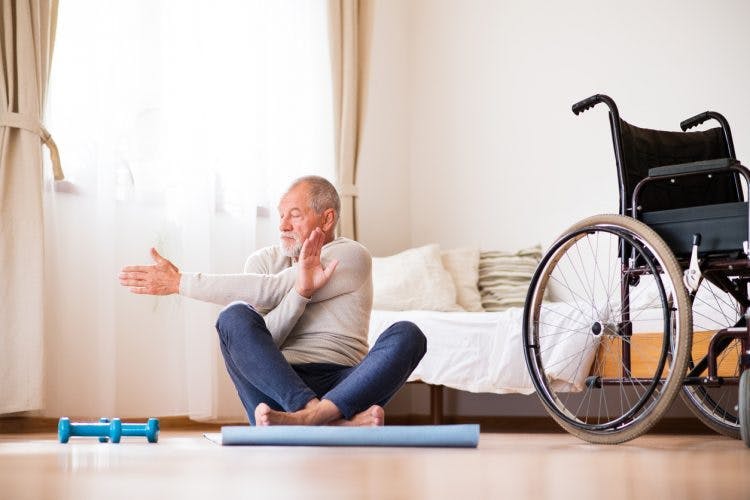Patients with a stroke may benefit from physical therapy.
Strokes disrupt crucial connections between your brain and muscles, making them the most significant cause of long-term disability and, in many cases, physical restrictions and movement. However, this loss may not always be permanent. During the early phases of healing, when patients have little control over their afflicted muscles, rehabilitation is critical.
A consistent physiotherapy Dubai routine will be important to your long-term success, no matter where you are on your road to recovery. Learn why physiotherapy in Dubai for stroke survivors is so useful. Also, learn what to look for while selecting a facility and seeking stroke-related therapies.
10 Physiotherapy exercises for patients with stroke
Physiotherapy for stroke patients can be done at home in various ways. How can you determine which methods are the most effective for you? Every stroke is different, and varied at-home therapies will help each survivor the most. As a result, it’s critical to try new things.
Stroke patients must maintain a rigorous recovery program at home after being discharged from outpatient therapy. The brain requires constant stimulation to remain on the road to recovery.
Here are ten pointers for stroke sufferers who want to do their physical therapy at home.
- Stroke Rehabilitation Exercises on a Day-to-Day Basis
Stroke rehabilitation exercise encourages your brain to transmit messages to your muscles for movement, whereas regular exercise concentrates on muscle strength. Neuroplasticity, the brain’s mechanism for rebuilding itself and learning new skills, is the focus of rehabilitation.
Muscle strengthening is another goal of stroke therapy, as it helps to prevent muscle atrophy induced by inactivity.
- The Use of Mirrors To Encourage Hand Movement
Mirror therapy is a technique for reactivating hand-to-brain communication in persons who have hand paralysis or very limited hand movement. A tabletop mirror is used to cover the impacted arm with the reflection of the operable arm in this stroke rehabilitation procedure. Then you do tabletop hand treatment exercises while staring in the mirror.
Even though you are aware that you are only moving one hand, your brain is fooled into believing that you are moving both. It promotes neuroplasticity and increases mobility in the damaged hand over time.
- Arm/Leg Paralysis: Constraint-Induced Movement Therapy
Physiotherapy Dubai that involves constraint-induced mobility is a difficult sort of treatment. This therapy may be beneficial to stroke sufferers. It can be helpful if you have hemiplegia or hemiparesis. It works by restricting mobility on the unaffected side and pushing users to use the affected side.
- Mind-Body Exercises to Help With Paralysis
Patients who are paralyzed and unable to move without assistance benefit considerably from mental practice. It enables the brain to reorganize itself without the need for movement.
Before doing your rehab exercises in real life, try mentally practicing them for 5 minutes. According to the study, visualizing yourself moving triggers neuroplasticity in the same way that truly moving does.
- Rehab Equipment for the Home
If you’ve gotten tired of following along with the written sheets of exercises while recovering from a stroke at home, home rehabilitation gadgets can help. Inquire with your therapists about any home exercise equipment recommendations.
- Therapeutic Movement daily
For stroke physiotherapy at home, most physiotherapists have one fundamental goal: keep moving. Any movement is good during the rehabilitation from a stroke. Make every effort to engage in rehabilitative mobility exercises daily.
Because one of the most important factors in successful recovery is how regularly patients pursue long-term therapy. The best results will come from taking regular steps over time.
- Kaizen
Kaizen is a Japanese phrase that refers to the technique of making tiny, steady improvements over time. Sounds too good to be true, doesn’t it? The simplicity is the most difficult aspect. Patience and perseverance are two qualities required for physical treatment after a stroke.
- Maintaining a Distraction-Free Environment is number eight on the list.
You won’t benefit from physical treatment if your focus is split between it and something else going on in the background. Create a calm, private atmosphere to work out to keep your attention. Your brain is rewiring itself right now. As a result, avoid allowing distractions to obstruct your work.
- Once you’ve reached the plateau, keep going.
Because every stroke is distinct, it will heal at a different pace. On the other hand, the stroke recovery plateau is a well-documented technique in which results usually slow down after three months.
It’s quite natural, and you should anticipate it. Do not, however, let this deter you from continuing your physical treatment at home. Although it may take longer for the results to show, recovery will continue until you stop.
- Treatment for Spasticity’s Root Cause
Stretching is useful for spasticity, but it is even better when combined with daily rehab activity. A disruption in communication between the brain and the body causes spasticity. The muscles tense up to protect themselves when the brain cannot deliver messages to the muscles directing them whether to move or rest.
Stretching helped to keep contractures and learned nonuse at bay. It does not, however, treat the root source of spasticity. The underlying problem is addressed by rewiring the brain. As a result, your everyday at-home exercise increases mobility and decreases spasticity over time.
Summary:
Our home physio Dubai improves the quality of life by strengthening and enhancing respiratory difficulties. Our licensed physiotherapists will also aid patients at home by draining fluids from the lungs.
Royal Premiere Healthcare brings doctor on call services in Dubai. We provide quality care medical services at home including doctor on call, physiotherapy, home care nursing and many more.
